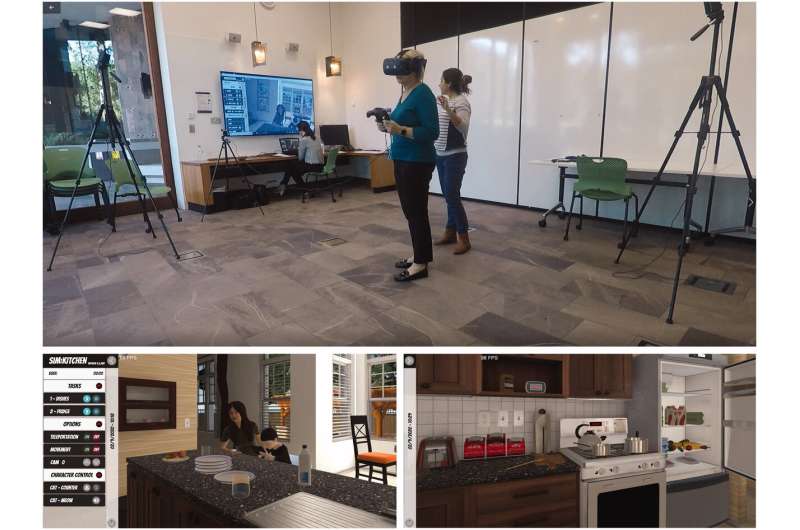Virtual reality to help patients speak up

Immersive virtual reality (VR) technology could help speech pathologists treat communication disorders, according to University of Queensland research.
Dr. Atiyeh Vaezipour, from the RECOVER Injury Research Center, said the results provided a foundation to inform the design, development and implementation of a VR system to be used in the rehabilitation of people with acquired communication disorders.
"Communication disorders can result in significant barriers to everyday life activities, and commonly require long-term rehabilitation," Dr. Vaezipour said.
"Traditionally, speech pathologists deliver therapy in places such as hospitals and health centers, where there are limited opportunities for real life interaction.
"VR applications could simulate social communication situations that are difficult to create within the clinic in realistic, personally relevant and safe environments.
"VR could be used as a rehabilitation tool in communication environments that mimic the richness, complexity and dynamics of everyday situations."
Dr. Vaezipour interviewed and surveyed speech pathologists following their use of an immersive VR kitchen environment.
"Participants in this study were positive about the usefulness of VR and its potential applications to the management of communication disorders within speech language pathology," she said.
"Speech pathologists considered VR to be a viable option for observation of communication performance in more life-like environments, bridging the gap between communication in the clinic and communication in external environments where distractions are present, such as background noise or visual complexity.
"VR could provide valid contexts for people to practice their communication skills, build confidence interacting with others and generalize their communication skills to various environments."
Dr. Vaezipour said a human-centered design process was critical in developing VR tools for use in clinical practice.
"Immersive VR applications will require customisation and adaptation capabilities that enable tailoring to the specific target goals, and physical, cognitive, and communication needs of the client," she said.
"Incorporating human factors from the early stages of design and development could enable the successful adoption of novel technologies in rehabilitation.
"More evidence-based research to support the use of immersive VR in the management of adult neurogenic communication disorders is critical to enhance uptake and sustained use by speech pathologists."
The study is published in the journal Disability and Rehabilitation.
More information: Atiyeh Vaezipour et al. "It's really exciting to think where it could go": a mixed-method investigation of clinician acceptance, barriers and enablers of virtual reality technology in communication rehabilitation, Disability and Rehabilitation (2021). DOI: 10.1080/09638288.2021.1895333



















